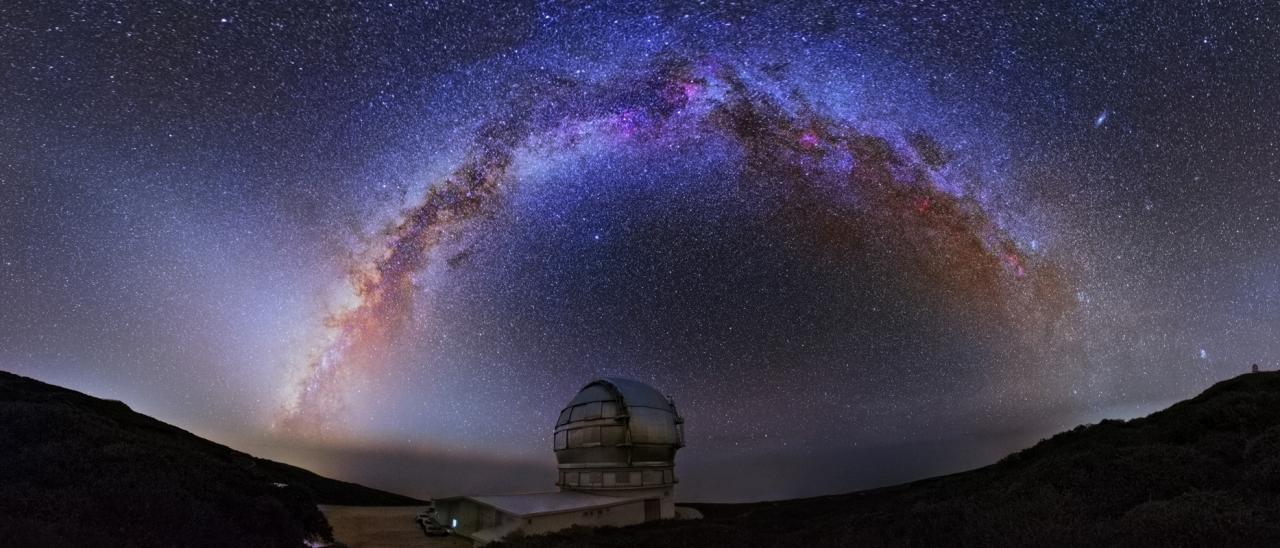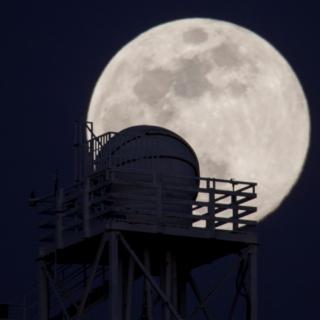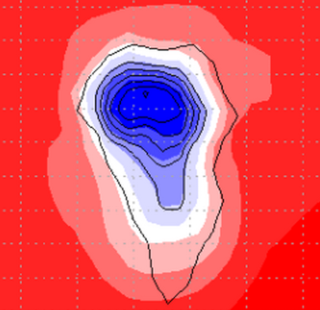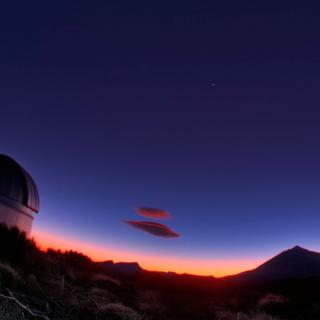The sky brightness (SB) is the routine measurement of the night sky brightness in units of mag/arcsec2 in a moonless night. This allows for identifying possible contaminating sources like artificial lighting.
At sites with no artificial light contamination, the main sky brightness contribution came from atoms and molecules emission (O2 , O , OH , Na) at high altitudes (90 ~ 300 km) by means of excitation by UV radiation. This is known as ariglow, contributing with about a 65% to the sky brightness. The near-IR is dominated by OH airglow lines with contributions both from OH and thermal emission from CH4 and H2O.
Others contributions to the sky brightness are the Zodiacal light (light dispersed by interplanetary dust) with a contribution of ~27%, and diffuse light from stars which is dispersed into the atmosphere (which contributes with ~7%)
Light pollution degrades the quality of the night sky, increasing its brightness.
The Night Sky Background (NSB) is the median of the maximun night sky brightness, measured in a moonless and clear night at high galactic latitude, high ecliptic latitude and at sun spot minimun.
For this particular issue see Benn & Ellison (1998) and Díaz-Castro, F. (1998).
Artificial light may produce a ecosystem degradation. The larger the contaminating sources, the larger the sky brightness and less astronomical objects can be observed at night.
At the Canarian Observatories, the darkness of the sky is protected by the Sky Law (Law 31/1988). The Sky Quality Protection Technical Office (OTPC) was set up by the IAC in January 1992 to provide advice on the application of this law which protects the Canarian Observatories from light pollution, radioelectric pollution, atmospheric pollution and aviation routes. The OTPC takes routine measurements at the Observatorio del Teide and at the Observatorio del Roque de los Muchachos (ORM)
The ORM is a dark site. Light pollution contributes < 0.03 mag to the sky brightness in all bands, which is well bellow 0.1 mag limit recommended by IAU for a dar site (Benn & Ellison (2007)).
Measurements are performed with photometers, ASTMON (ASTMON-OT, ASTMON-ORM) and SQM (ASTMON-OT, ASTMON-ORM).
ASTMON
It is a CCD with filters (U, B, V, R, I) and an eye-fish ocular with a 180 deg. field of view. ASTMON can obtain high spectral resolution measurements. An integrated temperature and moist control system allows the use of this instrument at exterior. Measurements have to be calibrated in order to obtain the sky brightness in standard units.
SQM
It is a photometer with a light-frequency converter. It shows the sky brightness in one or two photometric bands. The field of view is ~20 deg.
NSB RESULTS AT THE CANARIAN OBSERVATORIES
1. The results of NSB retrieved between 1990 and 2010 at the ORM, with photometers in the V filter, are shown in the next plot.
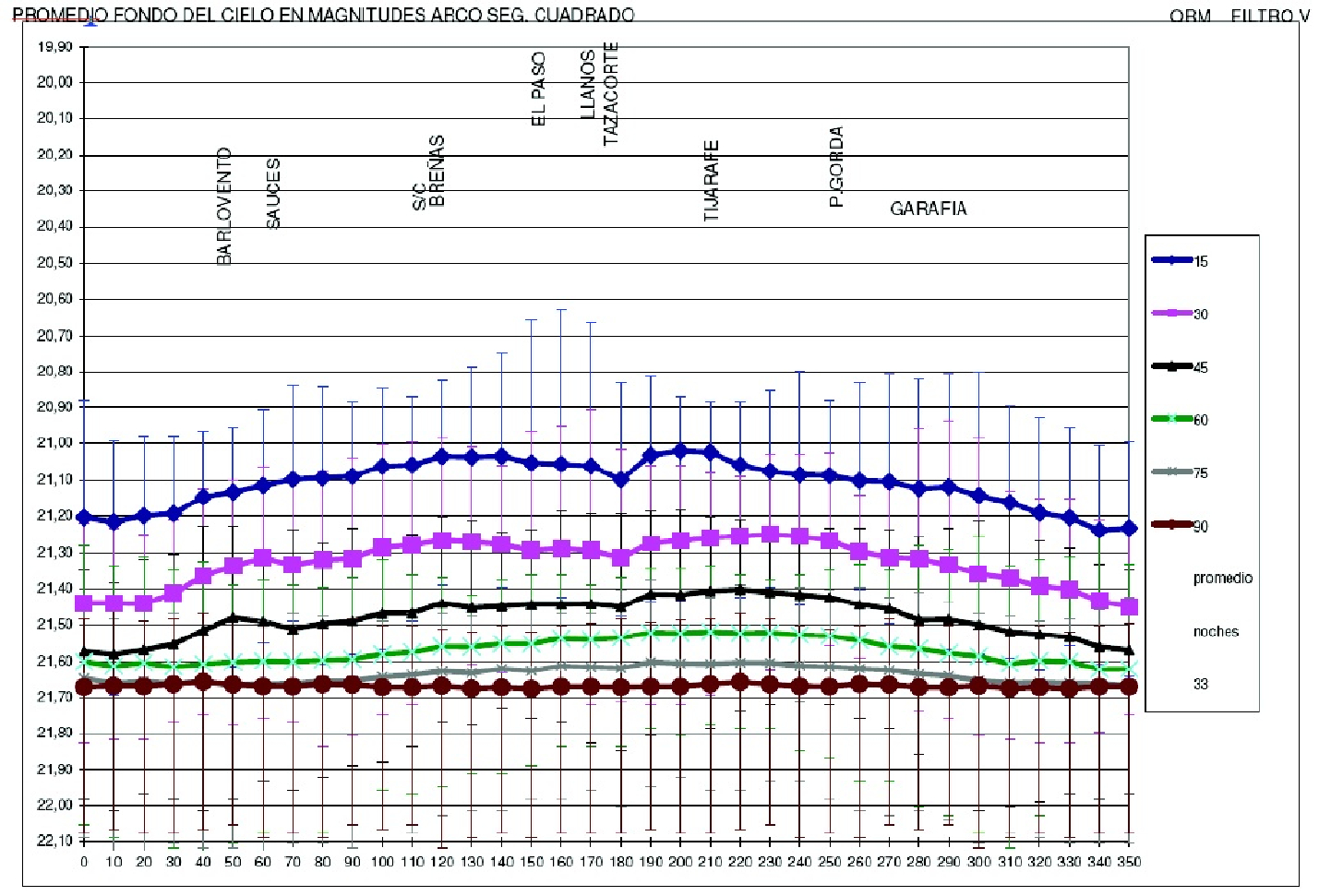
2. The NSB is continuously measured at the ORM and at the OT with ASTMON. Here we show the monthly NSB at the OT for different filter for a particular year, 2016
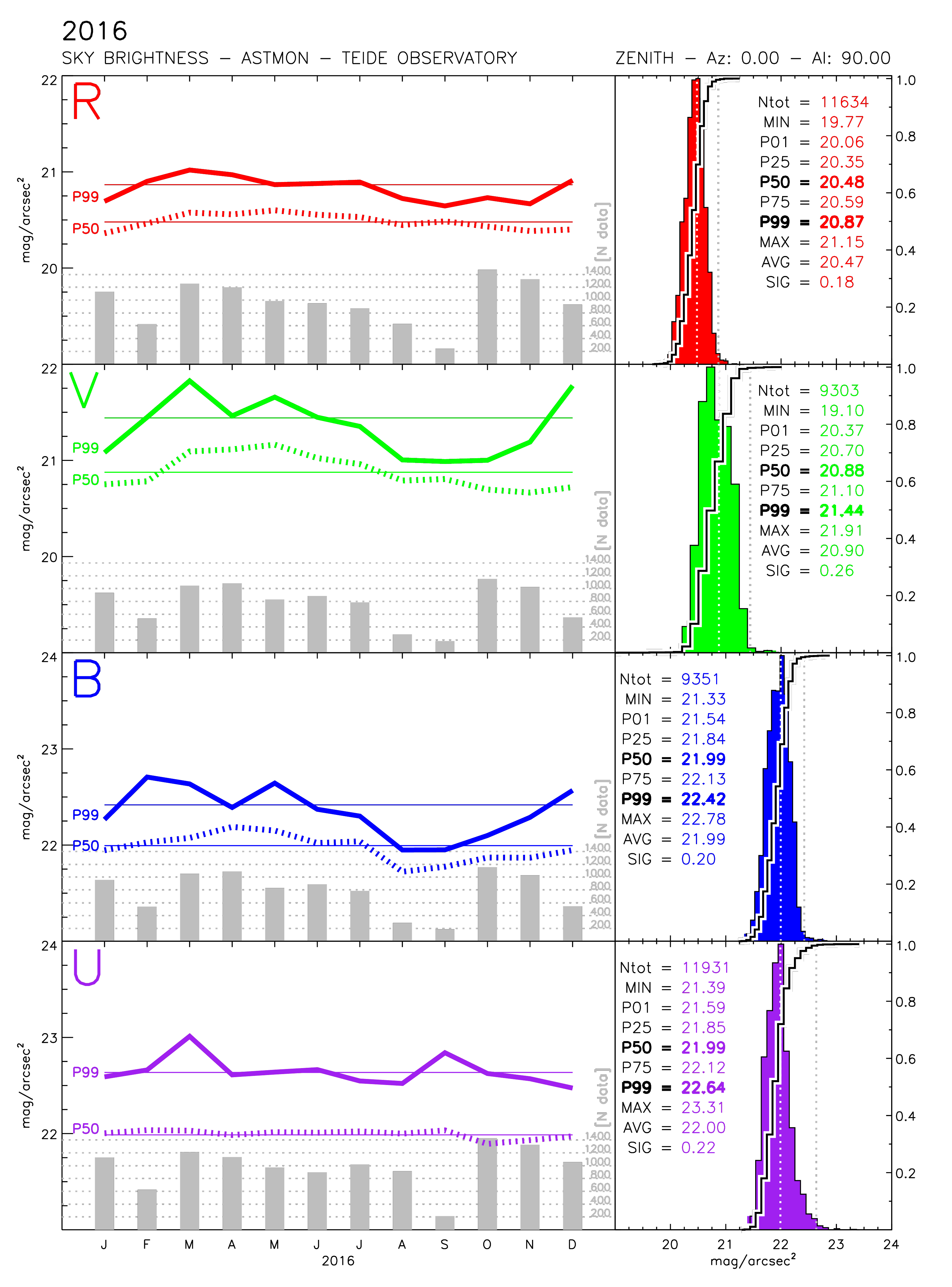
NSB RESULTS AT DIFFERENT ASTRONOMICAL OBSERVATORIES
1. VISIBLE
| (mag/arcsec2) | MAUNA KEAa | PARANALb,c | LA SILLAd,e | TOLOLOe | SAN PEDRO MÁRTIRf | ORMg | OTg |
| V | 20.78 | 21.61; 21.50 | 21.80; 21.90 | 21.80 | 21.84 | 21.70 | 21.20 |
- [a] www.gemini.edu
- [b] www.eso.org
- [c] www.eso.org
- [d] www.eso.org
- [e] www.eso.org
- [f] www.arxiv.org
- [g] Sky-team TMT Report (2018)
2. INFRARED
| (mag/arcsec2) | MAUNA KEAa | PARANALb | ORM @ TNG (NICS)c | ORM @ WHT d | SOUTH POLEe |
| J | 15.7 | 16.5 | 15.6 | 16.6 | 16.8-16 |
| H | 13.6 | 14.4 | 14.0 | 14.3 | 15.2-14.2 |
| K | 13.0 | -- | 13.4 | 14.1 | 15.8-14.9 |
| Ks | -- | 13.0 | 12.8 | -- | 15.6 |
- [a] Legget (2000)
- [b] Cuby et al. (2000)
- [c] Oliva, E. (2002)
- [d] Zurita, E. (2002)
- [e] Phillips et al. (1999)
Note about IR sky background:
UKIRT is an infrared optimized telescope while TNG and WHT are telescopes optimized for the optical range. For this reason, it is not straightforward to compare the sky background obtained with an IR optimized telescope and instrument (UKIRT wide-field camera) with an optical optimized instrument (INGRID @ WHT).
Besides this, it will be noticed that the determination of the background at K band is affected by:
1) whether telescope is set up for the IR.
2) whether the instrument is optimized for the IR.
3) the temperature of the telescope (a factor of 2 per 10 °C.)
The sky itself is almost irrelevant, unless the emissivity of the telescope goes below 2%.
